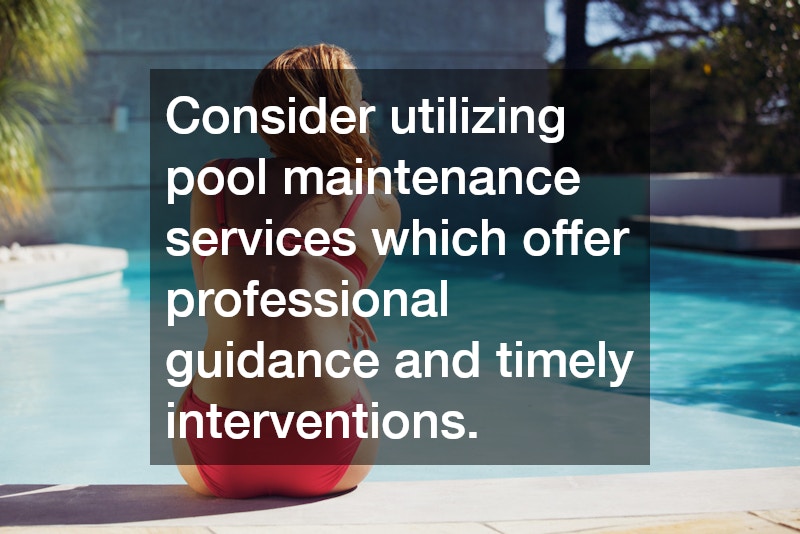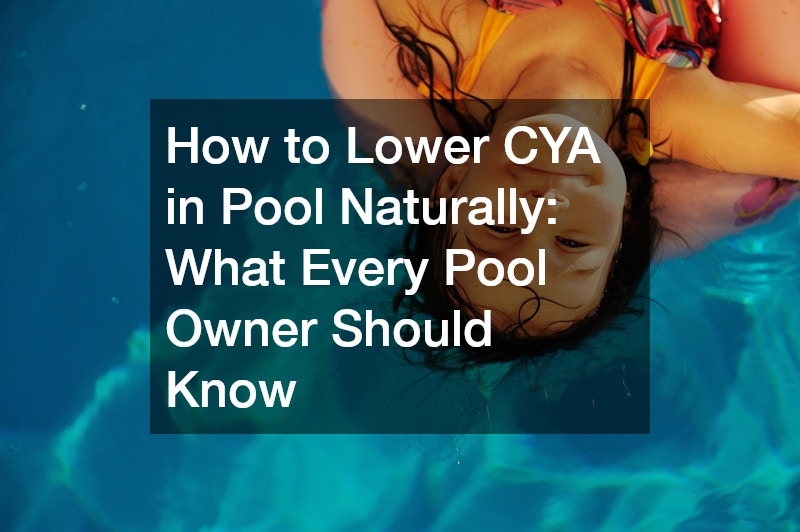Cyanuric Acid (CYA) plays a crucial role in maintaining your pool’s health, enhancing the efficiency of chlorine and protecting it from the sun’s UV rays. However, when CYA levels become too high, it can lead to problems such as chlorine lock and other issues affecting your pool’s water quality. This article explores natural methods for lowering CYA levels and provides insights into best practices for pool owners.
Understanding CYA and Its Importance
Cyanuric Acid, commonly known by its abbreviation CYA, acts as a stabilizer for the chlorine used in pool maintenance. Without CYA, chlorine would evaporate rapidly under the sun, reducing its effectiveness.
A balanced amount of CYA ensures the pool remains hygienic and reduces the frequency of chlorine replenishment.
However, the importance of CYA does not negate the necessity of its proper management. Excessive amounts can bind to chlorine, rendering it ineffective and leading to an issue known as chlorine lock. Chlorine lock essentially prevents the chlorine from sanitizing the water, leading to potential bacterial growth and algae blooms.
Therefore, understanding how to lower CYA in pool becomes essential for maintaining a healthy and safe swimming environment. It is crucial for pool owners to regularly test and adjust CYA levels to ensure optimal water quality. Effective management aids in maintaining a stable chemical balance and extending the life of your pool’s infrastructure.
The Problem with High CYA Levels
High CYA levels in your swimming pool can significantly hinder the overall performance of your pool’s sanitizing agents. As it increases, it reduces the chlorine’s ability to kill bacteria and algae effectively, leading to cloudy water conditions. Pool owners often find themselves adding more chlorine to compensate, which can be costly and labor-intensive.
Additionally, high CYA contributes to a phenomenon called “chlorine lock,” where chlorine becomes useless and the pool water loses its clarity and hygienic properties. To mitigate these effects, it is essential to regularly monitor the CYA levels and take remedial measures promptly. Consistency in testing can greatly aid in preventing unexpected spikes in your pool’s chemical composition.
Furthermore, commercial products often used in pools, such as trichlor and dichlor, can unintentionally raise CYA levels. It’s critical for pool owners to be mindful of the chemical products they use, checking labels for CYA content and considering alternative options where possible. Awareness of these factors plays a pivotal role in maintaining the pool’s overall health.
Natural Methods for Lowering CYA Levels in Your Pool
One effective natural method of lowering CYA levels is through dilution, by partially draining the pool and refilling it with fresh water. This can help achieve a significant reduction in CYA concentration if carefully calculated and executed. However, it’s essential to ensure that the water’s pH and alkali levels are properly adjusted after dilution.
Another approach involves utilizing reverse osmosis, which is a method that removes dissolved solids and reduces contaminants in the pool water. While more commonly used for serious contaminant issues, reverse osmosis can be effective in situations where dilution alone is insufficient. It is, however, typically more expensive and equipment-intensive compared to basic water replacement methods.
Additionally, managing the introduction of CYA into the pool in the first place can prevent excessive accumulation. Opt for chlorine alternatives that do not contain CYA or use granular or liquid chlorine which often contains little to no CYA. Regular inspection and mindful selection of pool chemicals can go a long way in maintaining steady CYA levels.
Routine Maintenance and Best Practices
Adhering to regular pool maintenance schedules and best practices is vital for preventing high CYA levels. Regular water testing, ideally once a week, ensures you catch any imbalances early. By making adjustments as needed, you can avoid the need for more drastic remedial measures.
Incorporating a consistent testing regimen helps in maintaining a comprehensive understanding of pool chemistry. A specialized pool maintenance kit can assist in accurately measuring chemical levels, including CYA. By understanding these metrics, you can better manage your pool’s chemical balance proactively.
To further support CYA management, consider utilizing pool maintenance services which offer professional guidance and timely interventions. These services provide insight into your pool’s condition and optimize efforts to maintain proper chemical levels. Engaging a reputable pool service can aid in long-term upkeep and efficiency.
Ultimately, educating yourself and staying informed about the latest pool maintenance techniques will greatly benefit both novice and experienced pool owners. Regular upkeep, conscious chemical use, and a proactive approach to pool care form the foundation of a healthy, inviting pool environment. Empowered with this knowledge, every pool owner can enjoy a cleaner and more sustainable swimming experience.




